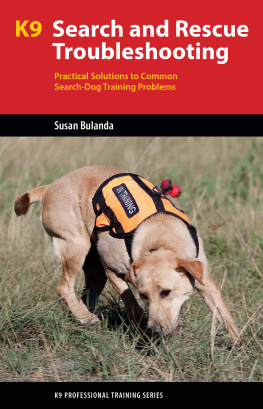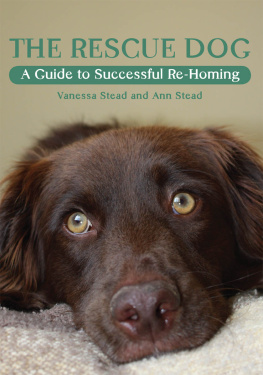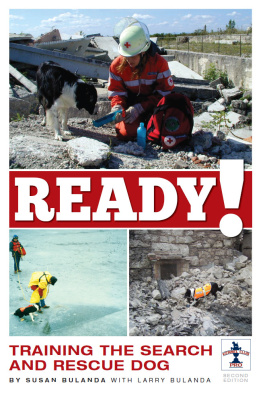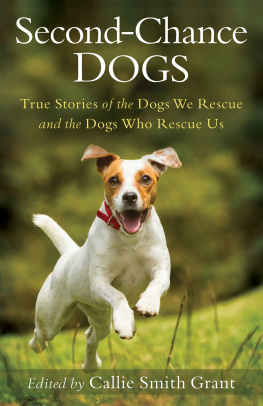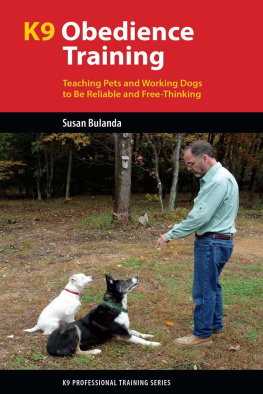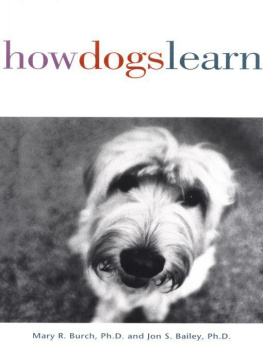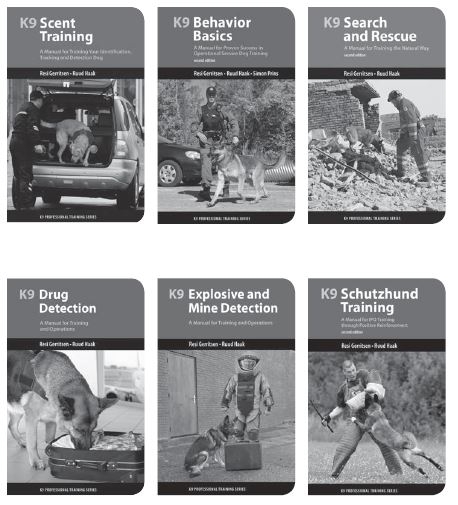K9 Search and Rescue Troubleshooting
Practical Solutions to Common Search Dog Training Problems
Susan Bulanda
K9 Professional Training Series

Copyright 2017 Susan Bulanda
17 18 19 20 21 5 4 3 2 1
Thank you for buying this book and for not copying, scanning, or distributing any part of it without permission. By respecting the spirit as well as the letter of copyright, you support authors and publishers, allowing them to continue to create and distribute the books you value.
Excerpts from this publication may be reproduced under licence from Access Copyright, or with the express written permission of Brush Education Inc., or under licence from a collective management organization in your territory. All rights are otherwise reserved, and no part of this publication may be reproduced, stored in a retrieval system, or transmitted in any form or by any means, electronic, mechanical, photocopying, digital copying, scanning, recording, or otherwise, except as specifically authorized.
Brush Education Inc.
www.brusheducation.ca
Editorial: Meaghan Craven
Cover Design: John Luckhurst; Cover image: Jim Dobie
Interior Design: Carol Dragich, Dragich Design
Printed and manufactured in Canada
Library and Archives Canada Cataloguing in Publication
Bulanda, Susan, author K9 search and rescue troubleshooting : practical solutions to common search dog training problems / Susan Bulanda.
(K9 professional training series)
Issued in print and electronic formats.
ISBN 978-1-55059-736-3 (softcover).ISBN 978-1-55059-737-0 (PDF).
ISBN 978-1-55059-738-7 (Kindle).ISBN 978-1-55059-739-4 (EPUB)
1. Search dogsTraining. 2. Rescue dogsTraining. I. Title. II. Series: K9 professional training series
SF428.73.B84 2017 636.7 0886 C2017-906017-1
C2017-906018-X
Introduction
Over the years, many search and rescue (SAR) dog handlers across North America and Europe have contacted me about training problems with their SAR dogs. Some problems started at the beginning of training and some developed later in the dogs career.
Unfortunately, there is no one solution to solving the problems that each dog develops. However, understanding the possible reasons why problems develop and having a few methods at hand to solve them can often work wonders. This book will offer some of the reasons for problems, as well as some solutions.
Although the problems addressed in this book are more common with air-scenting and scent-specific dogs, the solutions apply to all disciplines of SAR work. This is because the basis for the problems is usually the same or similar, regardless of discipline.
Disclaimer
While the contents of this book are based on substantial experience and expertise, working with dogs involves inherent risks, especially in dangerous settings and situations. Anyone using approaches described in this book does so entirely at his or her own risk, and both the author and publisher disclaim any liability for any injuries or other damage that may be sustained.
Finding a Good SAR Dog
The selection of a dog to use for SAR is the first step toward developing a successful SAR dog team. By the same token, the wrong dog (or handler) is a recipe for failure. There are three categories of SAR dogs that handlers attempt to train.
Type One: The Pet
When you decide to join a canine SAR team, you typically want to train your pet dog. Often, you entertain notions about you and your dog saving people and being heroes.
If this is you and you are sincere, and your dog is capable and willing, this combination can succeed. However, the first lesson you must learn is that to be a good SAR dog handler, you must first be trained as a rescue person. Then you can specialize in the K9 aspect of SAR. A SAR dog handler is a rescue person who specializes in the use of the K9. The K9 is only one tool a rescue person uses to find missing people, and not all missions require the use of a dog.
Understanding and accepting this key aspect of the SAR dog handlers job is important because it influences your handler mindset, giving the dog a better chance to succeed. If you view SAR as just another activity for your dog, or a fun thing to do, you will inadvertently communicate that to your dog, which can affect the dogs attitude toward the work. If you do not take SAR work seriously, your dog may not, either. Of course, the dog must enjoy the work and think it is fun. But your attitude toward SAR work should not be the same as when you are playing a game of fetch with your pet. When people have the Its all a game attitude, the dog can interpret it to mean, It is okay if I dont feel like doing it today, or the dog may feel it is acceptable to only do the parts he wants to do. The dog may even feel that if something better comes along, he will do that instead.
As any working dog handler with experience knows, dogs are in tune with the moods and attitudes of the handler, even to the point where they can feel the handlers attitude through the leash. A dog can smell your mood, since our moods change our body chemistry just enough to give a scent signal to a dog. Think of the dog that knows when his owner is afraid and the change in the dogs behavior as a result, or the reaction of the dog when the owner is happy and excited. It is not only the tone of your voice, your body language, and your facial expressions that communicate to the dog, but your scent as well.
Recent studies have shown that dogs have a special area in their brain to process human faces, which gives us another clue as to why dogs are sensitive to human social cues. Dogs are much more aware of what their handlers think, feel, and do than most people give them credit for. Ignorance of or ignoring this aspect of canine/human communication is often at the root of training problems.
From the beginning, therefore, you, the SAR dog handler, must take SAR seriously and leave all ego and romantic notions at home.
Type Two: The Adopted Dog
The second type of dog that handlers use is one they have adopted. While this is a noble idea and can work, it is risky because the adopted dog seldom comes to a new owner with a reliable history. People often lie when they surrender dogs because they believe someone else can fix the dogs problems, and they want to give the dogs every chance to have a normal life.
Some people believe that by giving up a dog for adoption, the problem will magically go away. Very few dogs are surrendered due to the illness, retirement, divorce, or death of their owners. Most are surrendered because they have behavior problems. Often the original owners of surrendered dogs have created the problems by the way they raised them or did or did not train them, or because they selected the wrong type of dog for their lifestyle and ability to cope with a dog, or simply because they got tired of the dogs. In all cases, the dogs have been short changed and did not get what they needed to succeed.

